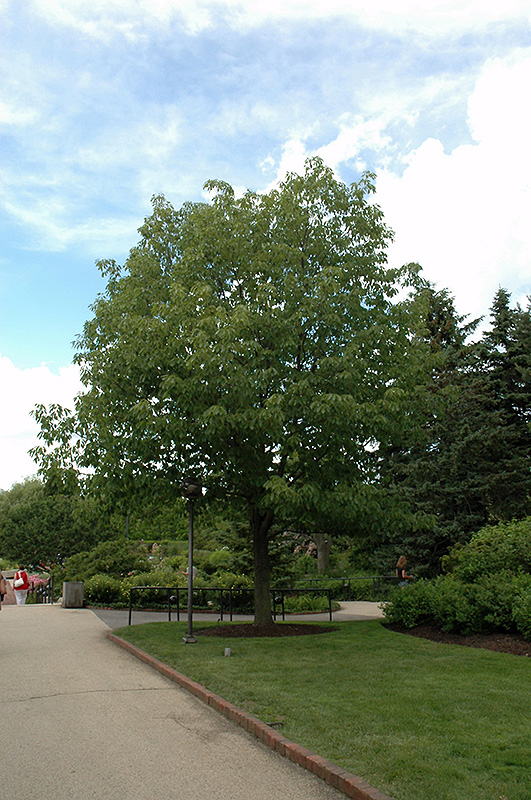Height: 70 feet Spread: 60 feet
Sunlight:
Hardiness Zone: 4a Other Names: syn. Quercus montana, Rock Oak, Tanbark Oak Description: This oak variety is distinguished by its massively ridged bark, and wide growth habit; foliage is chestnut-like, oval, toothed, with whitish undersides; ideal as a shade tree in home landscapes; extremely tough and adaptable Ornamental Features Oak, Chestnut has dark green deciduous foliage on a tree with a round habit of growth. The serrated oval leaves do not develop any appreciable fall color. It produces brown acorns in late summer. The fruit can be messy if allowed to drop on the lawn or walkways, and may require occasional clean-up. Landscape Attributes Oak, Chestnut is a dense deciduous tree with a more or less rounded form. Its average texture blends into the landscape, but can be balanced by one or two finer or coarser trees or shrubs for an effective composition. This tree will require occasional maintenance and upkeep, and is best pruned in late winter once the threat of extreme cold has passed. It is a good choice for attracting birds and squirrels to your yard. It has no significant negative characteristics. Oak, Chestnut is recommended for the following landscape applications; Planting & Growing Oak, Chestnut will grow to be about 70 feet tall at maturity, with a spread of 60 feet. It has a high canopy of foliage that sits well above the ground, and should not be planted underneath power lines. As it matures, the lower branches of this tree can be strategically removed to create a high enough canopy to support unobstructed human traffic underneath. It grows at a slow rate, and under ideal conditions can be expected to live to a ripe old age of 300 years or more; think of this as a heritage tree for future generations! This tree should only be grown in full sunlight. It prefers to grow in average to moist conditions, and shouldn't be allowed to dry out. This plant should be periodically fertilized throughout the active growing season with a specially-formulated acidic fertilizer. It is not particular as to soil type or pH. It is highly tolerant of urban pollution and will even thrive in inner city environments. This species is native to parts of North America. Special Attributes Chestnut Oak starts producing acorns between 20 and 25 years of age. The acorns are oblong 1-1 1/4 inch and mature in 1 season. The leaves can stay on the tree well into winter.![]()
![]()
![]()
![]()
![]()
![]()
![]()
![]()
![]()

